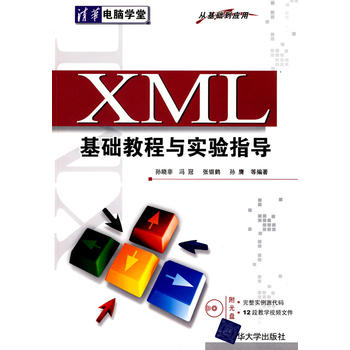Detailed introduction to abbreviations
Commonly used abbreviations Ajax: Asynchronous JavaScript XML (Asynchronous JavaScript XML) CPU: Central Processing Unit CSS: Cascading Stylesheets HTML: Hypertext Markup Language OASIS: Commonly used abbreviations Ajax: Asynchronous JavaScript XML (Asynchronous JavaScript XML) &
1. A brief introduction to commonly used abbreviations related to XML schema

## Introduction: Commonly used abbreviations Ajax: Asynchronous Javascript XML (Asynchronous JavaScript XML) CPU: Central Processing Unit (Central Processing Unit) CSS: Cascading Stylesheets (Cascading Stylesheets) HTML: Hypertext Markup Language ) OASIS:
2. Example of using RGBa to adjust transparency in CSS3

Introduction: This article mainly introduces the tutorial of using RGBa to adjust transparency in CSS3. RGBA is an extension of the RGB color model. This abbreviation represents the first letter of the three primary colors of red, green and blue, Alpha. The value represents the transparency or opacity of the color. Friends who need it can refer to
3. standard.jar PHP coding standard-php coding standard
Introduction: standard.jar:standard.jar PHP coding standard-php coding standard: Table of contents Introduction to the importance of standardization Explanation of the four stages of the agreed point of view Naming rules Appropriate naming abbreviations Do not use all capital letters Letter Class Naming Class Library Naming Method Naming Class Attributes Naming Parameters in Methods Naming Variables Naming Reference Variables and Function Return References Global Variable Definition Naming/Global Constants Static Variable Function Naming PHP File Extension Document Rules Evaluation Comments Should Tell a Story Document Decisions Use The header says
4. PHP coding standard-php coding standard_PHP tutorial
Introduction: PHP coding standard-php coding standard. Table of Contents Introduction The importance of standardization Explanation Agree with the point of view The four stages of the project Naming rules Appropriate naming abbreviations Do not use all capital letters Class naming Class library naming method naming
5. ThinkPHP3.1 Data CURD Operation Quick Start_PHP Tutorial
Introduction: ThinkPHP3.1 Data CURD Operation Quick Start. 1. Overview of CURD: CURD is an abbreviation in database technology. The basic functions of various parameters in general project development are CURD. It represents Create, Update, and Read
[Related Q&A recommendations]:
The above is the detailed content of Detailed introduction to abbreviations. For more information, please follow other related articles on the PHP Chinese website!

Hot AI Tools

Undresser.AI Undress
AI-powered app for creating realistic nude photos

AI Clothes Remover
Online AI tool for removing clothes from photos.

Undress AI Tool
Undress images for free

Clothoff.io
AI clothes remover

Video Face Swap
Swap faces in any video effortlessly with our completely free AI face swap tool!

Hot Article

Hot Tools

Notepad++7.3.1
Easy-to-use and free code editor

SublimeText3 Chinese version
Chinese version, very easy to use

Zend Studio 13.0.1
Powerful PHP integrated development environment

Dreamweaver CS6
Visual web development tools

SublimeText3 Mac version
God-level code editing software (SublimeText3)

Hot Topics
 1664
1664
 14
14
 1422
1422
 52
52
 1316
1316
 25
25
 1267
1267
 29
29
 1239
1239
 24
24
 RSS Document Tools: Building, Validating, and Publishing Feeds
Apr 09, 2025 am 12:10 AM
RSS Document Tools: Building, Validating, and Publishing Feeds
Apr 09, 2025 am 12:10 AM
How to build, validate and publish RSSfeeds? 1. Build: Use Python scripts to generate RSSfeed, including title, link, description and release date. 2. Verification: Use FeedValidator.org or Python script to check whether RSSfeed complies with RSS2.0 standards. 3. Publish: Upload RSS files to the server, or use Flask to generate and publish RSSfeed dynamically. Through these steps, you can effectively manage and share content.
 Is There an RSS Alternative Based on JSON?
Apr 10, 2025 am 09:31 AM
Is There an RSS Alternative Based on JSON?
Apr 10, 2025 am 09:31 AM
JSONFeed is a JSON-based RSS alternative that has its advantages simplicity and ease of use. 1) JSONFeed uses JSON format, which is easy to generate and parse. 2) It supports dynamic generation and is suitable for modern web development. 3) Using JSONFeed can improve content management efficiency and user experience.
 XML's Advantages in RSS: A Technical Deep Dive
Apr 23, 2025 am 12:02 AM
XML's Advantages in RSS: A Technical Deep Dive
Apr 23, 2025 am 12:02 AM
XML has the advantages of structured data, scalability, cross-platform compatibility and parsing verification in RSS. 1) Structured data ensures consistency and reliability of content; 2) Scalability allows the addition of custom tags to suit content needs; 3) Cross-platform compatibility makes it work seamlessly on different devices; 4) Analytical and verification tools ensure the quality and integrity of the feed.
 From XML to Readable Content: Demystifying RSS Feeds
Apr 11, 2025 am 12:03 AM
From XML to Readable Content: Demystifying RSS Feeds
Apr 11, 2025 am 12:03 AM
RSSfeedsareXMLdocumentsusedforcontentaggregationanddistribution.Totransformthemintoreadablecontent:1)ParsetheXMLusinglibrarieslikefeedparserinPython.2)HandledifferentRSSversionsandpotentialparsingerrors.3)Transformthedataintouser-friendlyformatsliket
 Building Feeds with XML: A Hands-On Guide to RSS
Apr 14, 2025 am 12:17 AM
Building Feeds with XML: A Hands-On Guide to RSS
Apr 14, 2025 am 12:17 AM
The steps to build an RSSfeed using XML are as follows: 1. Create the root element and set the version; 2. Add the channel element and its basic information; 3. Add the entry element, including the title, link and description; 4. Convert the XML structure to a string and output it. With these steps, you can create a valid RSSfeed from scratch and enhance its functionality by adding additional elements such as release date and author information.
 RSS Documents: How They Deliver Your Favorite Content
Apr 15, 2025 am 12:01 AM
RSS Documents: How They Deliver Your Favorite Content
Apr 15, 2025 am 12:01 AM
RSS documents work by publishing content updates through XML files, and users subscribe and receive notifications through RSS readers. 1. Content publisher creates and updates RSS documents. 2. The RSS reader regularly accesses and parses XML files. 3. Users browse and read updated content. Example of usage: Subscribe to TechCrunch's RSS feed, just copy the link to the RSS reader.
 Beyond the Basics: Advanced RSS Document Features
Apr 21, 2025 am 12:03 AM
Beyond the Basics: Advanced RSS Document Features
Apr 21, 2025 am 12:03 AM
Advanced features of RSS include content namespaces, extension modules, and conditional subscriptions. 1) Content namespace extends RSS functionality, 2) Extended modules such as DublinCore or iTunes to add metadata, 3) Conditional subscription filters entries based on specific conditions. These functions are implemented by adding XML elements and attributes to improve information acquisition efficiency.
 Creating RSS Documents: A Step-by-Step Tutorial
Apr 13, 2025 am 12:10 AM
Creating RSS Documents: A Step-by-Step Tutorial
Apr 13, 2025 am 12:10 AM
The steps to create an RSS document are as follows: 1. Write in XML format, with the root element, including the elements. 2. Add, etc. elements to describe channel information. 3. Add elements, each representing a content entry, including,,,,,,,,,,,. 4. Optionally add and elements to enrich the content. 5. Ensure the XML format is correct, use online tools to verify, optimize performance and keep content updated.




